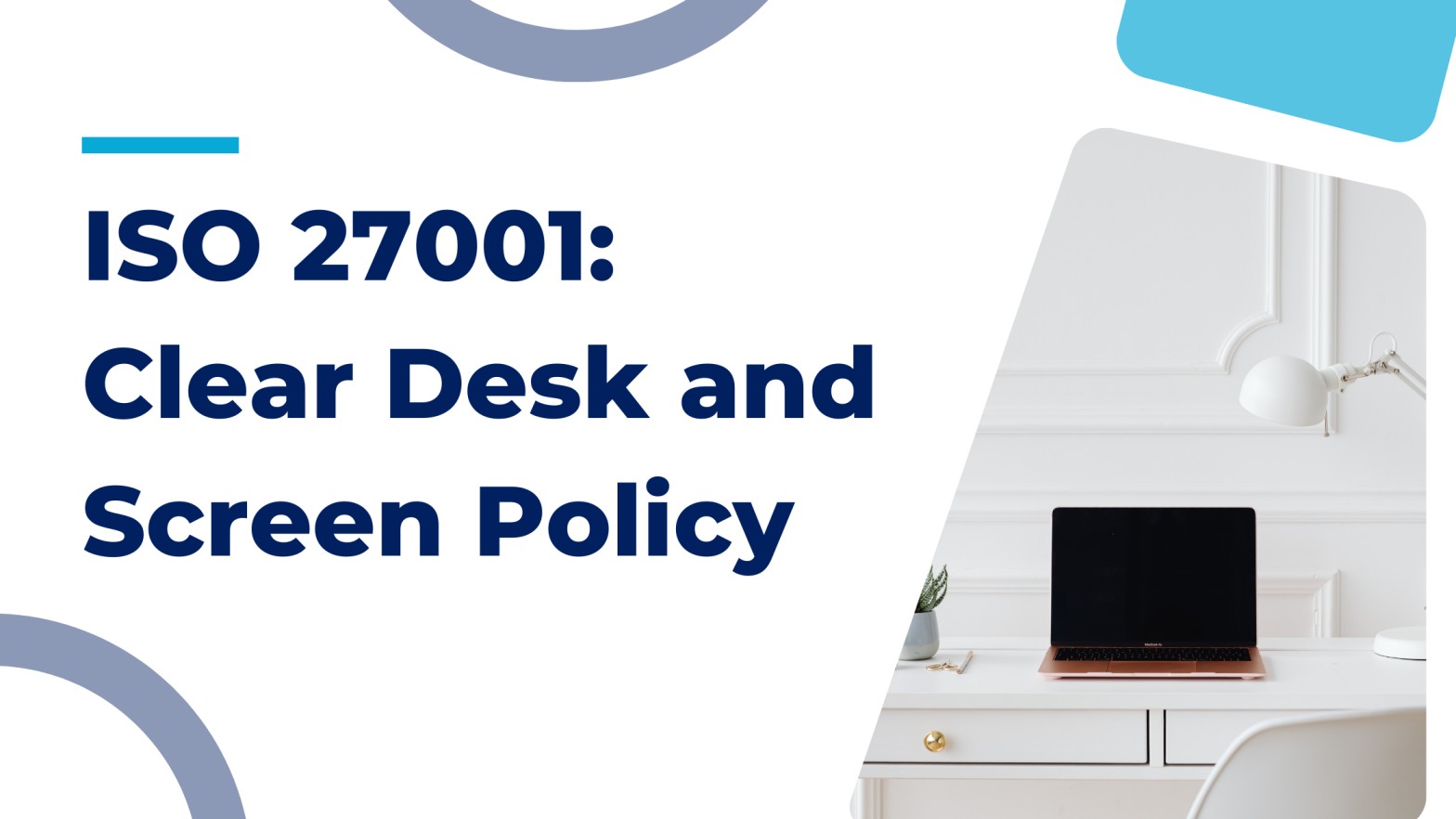

You know that feeling when you walk into an office, and it looks like a hurricane just blew through? Papers litter the area, sticky notes cling to computer monitors like colourful barnacles, and chaos fills the air.
Thank you for reading this post, don't forget to subscribe!The implications of these might seem obvious but they pose greater problems — Information and Cyber Security Risks.
Having information readily accessible to threat actors e.g., paper documents not in lockable storage, puts an individual and the organisation at risk of data exfiltration and a breach. This is where a Clear Desk Policy becomes important.
A Clear Desk Policy (CDP) within the framework of ISO 27001, often referred to as a “Clear Desk and Clear Screen Policy,” comprises precise guidelines and procedures crafted to align with the stringent information security stipulations set forth by ISO 27001.
The primary goal of a clear desk policy is to enhance information security, protect sensitive data, and reduce the risk of data breaches or unauthorised access.
ISO’s guidance goes beyond just having a tidy desk, however. The standard suggests protecting user endpoints via lock and key when not in use. This includes ensuring computers are configured with an automatic logout feature to lock when unattended, confidential documents are always collected from the printers and placed in a safe place out of sight, and clearing sensitive information from whiteboards immediately after use.
Vacating your office for good? Make sure you do a clean sweep and ensure there are no information assets fallen behind drawers or furniture for prying eyes to see.
Well, there are some compelling reasons for implementing a CDP. First and foremost, it helps protect sensitive data and reduce the risk of a data breach. Think about all those confidential documents, login credentials, and company secrets that could be lying around.
Additionally, senior management regularly enforcing the need for a tidy workspace can do wonders for productivity among employees. Let’s take a deeper look into its impact contributions to compliance with ISO 27001.
While Clear Desk Policies come with a host of benefits, they are not without their set of challenges:
So, you’re convinced that a Clear Desk And Screen Policy is a good idea for your organisation. But how do you go about implementing one? It’s not as complicated as it might seem. Here are some steps to get you started:
Clear Desk Policy (CDP) serves as a multifaceted asset for any organisation. It goes beyond just tidying up workspaces; it acts as a bulwark against data breaches, safeguarding sensitive information and ensuring its protection. The ripple effects of a CDP are equally significant, fostering increased productivity, improving office aesthetics, and enhancing overall organisation.
By adhering to such a policy, companies not only streamline their internal operations but also project a positive image of professionalism and meticulous attention to detail. So, consider implementing a CDP in your workplace – it’s a small step that can yield big benefits in the long run.
Don’t teach your users to follow policies. Teach them to understand the “why”.
Introducing ISO 42001 – the world’s first international management system standard focused specifically on AI.…
Data breaches and cyberattacks have become daily concerns for information security professionals and business leaders.…
It is an undeniable fact that all applications and infrastructures are essentially in need of…